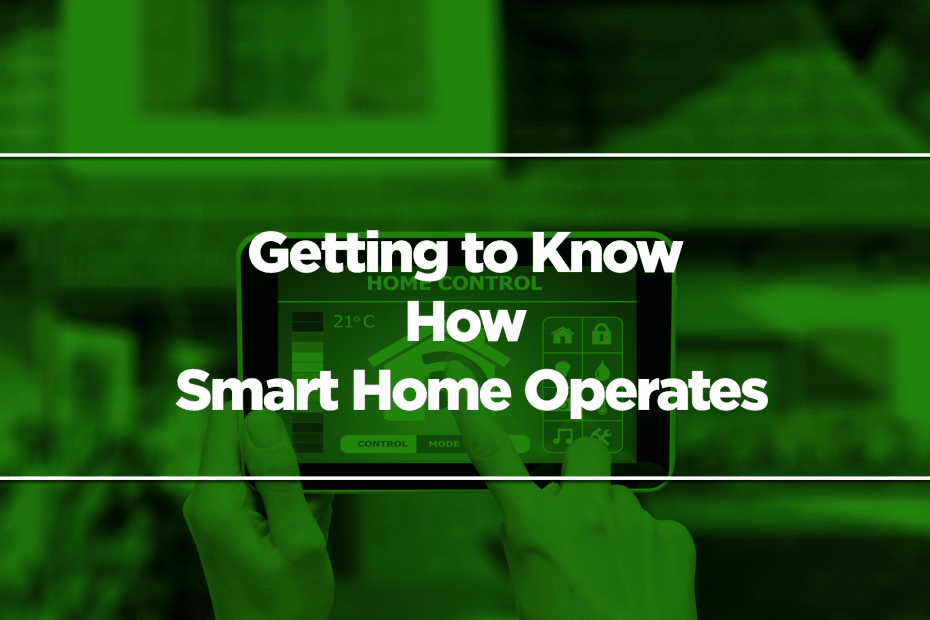Think about all those times you were enjoying your day somewhere; then you got distracted by the thought that you left your coffee maker on. Or maybe you are not sure whether your kids are doing their homework or watching TV.
You can now kiss those worries goodbye. Smart homes allow you to control your devices and appliances and monitor your home from afar. Some devices would even alert you if you left the door ajar or unlocked. So, you can have peace of mind.
And when you are home, you get to enjoy a comfortable and convenient lifestyle. Your oven helps you cook, the lights turn on at your command, and the vacuum cleaner cleans the floor on its own.
![Jasmine Peña, [8/9/2022 8:05 AM] Hi, Will. I'm available as of the moment. I'm available between 8am and 5pm PH time or 8pm and 5am EST. :) But if you have preferred time, let me know. :) Will, [8/9/2022 8:06 AM] Ok let’s schedule 8pm est Jasmine Peña, [8/9/2022 8:07 AM] Sure. Today? :) Will, [8/9/2022 8:07 AM] Tomorrow Will, [8/9/2022 8:07 AM] Can you make google pls Jasmine Peña, [8/9/2022 8:07 AM] I see. This is noted. Will, [8/9/2022 8:07 AM] Will@nxg.media Jasmine Peña, [8/9/2022 8:08 AM] Sure, I'll set up a Google meet meeting. I'll invite you on this email you've provided and will send you the invitation link here as well.](https://smarthomesreviews.com/wp-content/uploads/2022/08/1A-6.png)
Once, smart homes were reserved only for the wealthy and the tech-savvy. Smart home devices were expensive and hard to use. But not anymore.
Smart home devices are now more accessible. And devices will be even easier to use when Matter launches.
Also, only start-up companies used to make and sell smart home devices. Today, already-established tech companies like Amazon and Google have jumped in on the trend. That caused tremendous growth in the smart homes industry.
Last year, it grew 11.7%, reports the IDC. According to the same report, it will have a double-digit growth through 2026.
Smartphones and tablets play a huge part in the smart homes industry’s success. These portable mini-computers are very common. According to Pew Research Center, 1/3 of Americans live in households with 3 or more smartphones.
The best thing about these devices is they can connect to the internet. So, you can configure them to control a wide pool of other devices remotely. That brings us to the center of smart homes: the Internet of Things (IoT).
What is the Internet of Things?
Many devices now can connect and communicate with each other. They use sensors, processing ability, software, and other technologies to exchange data over the internet. Then, they act based on the data they have gathered, resulting in home automation.
The list of devices that can do that is growing every day. Now, there’s a smart counterpart to most appliances and devices at home. Light bulbs, security cameras, refrigerators, and even litter boxes – you can find all of these in the market for smart home products.
How Smart Home Tech Works
Many things happened in the smart homes industry before it got to where it is today. Trends came and went, and companies popped up and then said goodbye. But one of the companies to find success in this field is still around. The shocking part is that it’s older than you’d think.

The 60s was the golden age of futurism. People imagined flying cars, ray guns, and “total electric homes” (smart homes prototype). But it was in 1975 when the genesis of smart home products actually happened.
A company in Scotland developed X10, a technology allowing compatible products to talk to each other over existing electrical wires. The appliances and devices are the receivers, while the remote controls and keypads are the transmitters.
When you try to control a device from a different room, the transmitter issues a message in numerical code. The code contains an alert that it is issuing a command. Also, it includes the code that contains the actual command. And last, it contains an identifying unit number for the device that should receive the command.
X10 was a technological wonder at the time. However, it has its limitations. Using the electrical wires means it is prone to interference. And an X10 device can’t process that. It may not be able to react to that, or worse, it may not receive the command at all.
X10 devices are still available in the market. But if you are building a modern smart home, there are better options. The new technologies use radio waves rather than power lines to communicate. They connect via Bluetooth, Wi-Fi, or cell phone signals.
Zigbee and Z-wave
Zigbee and Z-wave are among the most prominent radio networks in home automation. Being mesh networks made them really popular. That provides more than one way for the message to reach its destination. So, it’s guaranteed that your device will receive it and react to the command.
Z-Wave’s network uses a Source Routing Algorithm. That algorithm determines what’s the fastest way for the message to reach its destination, improving the response rate.
Every Z-wave device is embedded with a code. The network controller recognizes that code when you plug the device into the system. Then, it determines the device’s location and adds it to the network.
The controller determines how to send every command that comes through. That process can take up a lot of memory on the network. So, Z-wave created a solution. There is a hierarchy between devices. Some controllers initiate messages, while others are “slaves.” The “slave” devices can only carry and respond to messages.
On the other hand, ZigBee’s name says what the mesh networking concept is about. The messages from the transmitter, looking for the best path to the receiver, zigzag like bees.
Furthermore, unlike Z-wave, its platform does not use a proprietary system to operate. Instead, it is based on the standard set by the Institute for Electrical and Electronics Engineers (IEEE) for personal wireless networks.
That means other companies can build Zigbee-compatible products; they don’t have to pay licensing fees for the technology behind Zigbee. It is this interoperability feature that gives this tech advantage over Z-wave.

Same as Z-wave, Zigbee has devices that route the message and devices that don’t.
Devices that use radio waves to communicate offer more flexibility. You can place them in more places since they don’t need to be wired. However, interference can still affect them. Though, they are more reliable than devices that use power lines. Insteon used to provide a solution to that problem. It allows devices to use either electric lines or radio waves. Sadly, that company has shut down recently. Though, finding a similar service is not in the realm of impossibility.
